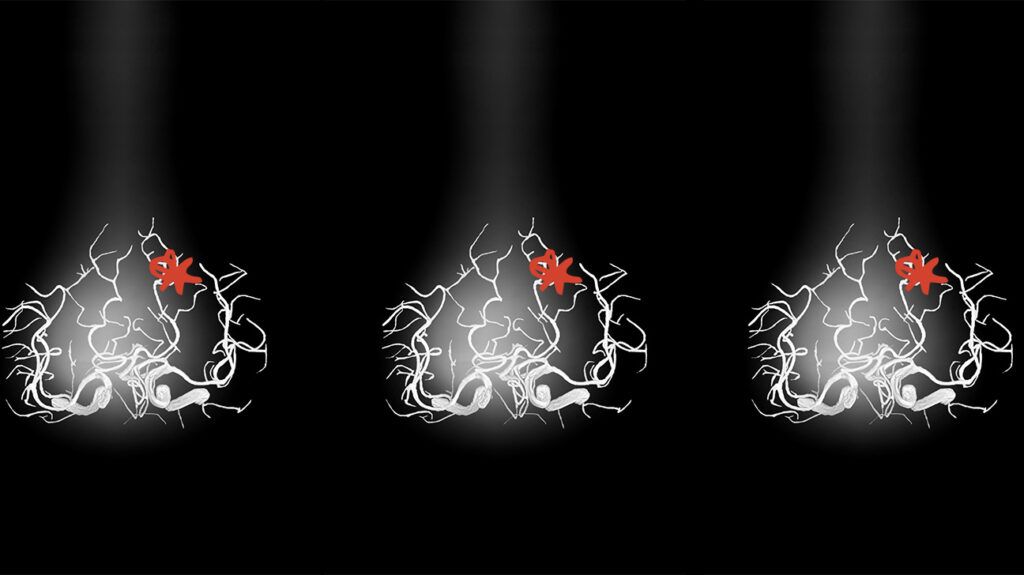Meningiomas are usually benign brain tumors. Parasagittal meningiomas can grow into the walls of the superior sagittal sinus, a blood vessel that runs along the upper part of the brain.
Most parasagittal meningiomas tend to be slow-growing and noncancerous. Still, treatment is necessary as they can cause serious health problems, such as seizures or problems with coordination.
This article explores parasagittal meningiomas, their symptoms, treatment, and outlook.

A parasagittal meningioma is a brain tumor originating in the meninges, the protective membrane surrounding the brain and spinal cord.
Unlike other brain tumors, it is usually benign but can sometimes be aggressive, fast-growing, and cancerous.
Even when benign, parasagittal meningiomas that grow near or within the wall of the sagittal sinus — a blood vessel in the brain — can cause neurological symptoms and complications. This is why careful medical evaluation and management is essential.
Symptoms of parasagittal meningiomas can vary depending on the tumor’s size, location, and effect on nearby brain tissue.
These tumors often develop gradually and, as a result, may go unnoticed in the initial stages. When symptoms do occur, they can include:
- persistent headaches
- seizures
- visual disturbances
- limb weakness or numbness
- changes in behavior or personality
- speech difficulties
- problems with coordination
A small study published in 2018 involved researchers reviewing the experiences of 125 people who underwent surgery to address parasagittal meningioma between 1985 and 2014. They evaluated their experiences based on specific variables, including medical events and outcomes.
Research indicated that they most commonly experienced motor deficits. This means a person has trouble moving body parts the way they want.
When a parasagittal meningioma pushes on the motor cortex or other areas of the brain, it can disrupt normal function and cause issues with moving certain body parts, such as the limbs or facial muscles.
In some cases, individuals may experience coordination problems, making it challenging to perform everyday tasks.
The exact cause of parasagittal meningiomas remains unclear. However, certain factors may increase the risk of developing these tumors. This includes having female sex hormones.
Parasagittal meningiomas tend to affect women more frequently than men.
In the 2018 study previously mentioned, of the 125 people who underwent surgery to remove their parasagittal meningioma, 35.2% were men, and 64.8% were women. Researchers also found that meningioma symptoms can intensify when progesterone levels increase, like when a person is pregnant.
Other risk factors may include:
- having obesity
- taking
estrogen-based hormone medications - having had previous radiation treatment
Doctors diagnose parasagittal meningioma using the following tests:
- medical history
- physical examination
- imaging
Imaging tests like MRI and CT scans can provide detailed pictures of the brain and surrounding areas. This allows doctors to identify tumors or other issues.
Depending on a person’s symptoms, doctors may also recommend taking neurological examinations to assess cognitive and physical function.
When results from the tests above strongly suggest meningioma, biopsy or surgical removal may be necessary. This is the only way to confirm a diagnosis and further analyze the tumor.
Treatment for parasagittal meningiomas may depend on the following:
- tumor size and location
- associated symptoms
- a person’s overall health
Doctors may suggest these options:
Observation
If a person has a small tumor that is not causing symptoms, they may not require immediate treatment.
Instead, doctors may recommend a “watch and wait” approach. This allows doctors to monitor the individual for any changes in symptoms and treat them when necessary.
Surgery
Doctors commonly suggest surgery to remove parasagittal meningiomas. However, surgery can be challenging because these tumors can grow into blood vessels.
A person may, therefore, require another treatment before surgery, such as radiation, to improve their chances of a successful outcome.
Radiation therapy
Radiotherapy uses high energy radiation — such as X-rays or protons — to target and destroy atypical or cancerous cells in the body. It can shrink tumors, stop their growth, or remove cancer cells altogether.
A person may have radiation therapy in combination with surgery or chemotherapy.
Chemotherapy
Parasagittal meningiomas are often benign, so chemotherapy is not usually part of the treatment regime. However, it may be an option for some individuals if their tumor does not respond to other treatments or returns post-treatment.
Newer options
Doctors may sometimes suggest treatment with newer options, such as immunotherapy or targeted therapy.
Immunotherapy involves drugs that boost the immune system’s natural ability to recognize and attack cancer cells.
Targeted therapy is another innovative approach aiming to target certain cancer cell characteristics. It pinpoints specific molecules or proteins that promote cancer growth without affecting healthy tissue.
The outlook for individuals with parasagittal meningiomas varies and can depend on the following:
- tumor size
- tumor location
- treatment response
In many cases, surgical removal can provide a favorable outcome, with people being able to lead fulfilling lives with appropriate follow-up care.
However, some research indicates that the tumor can return in roughly 4 in 10 cases, and this is more likely to occur in males. Therefore, doctors may suggest long-term monitoring post-treatment to help detect recurrence or potential complications.
Parasagittal meningioma is a tumor in the brain that tends to be benign. These tumors arise in the meninges surrounding the brain, near the sagittal sinus.
While the exact cause of parasagittal meningioma is not fully understood, several risk factors have been identified, including being female, having obesity, and having a history of radiation treatment.
Depending on the location, the tumor can lead to various neurological symptoms, such as headaches and seizures.
Diagnosis involves medical imaging and neurological tests. Following confirmation, doctors may suggest treatment like surgery, radiation therapy, or targeted drugs. The outlook for individuals with parasagittal meningiomas varies but can be positive with timely and appropriate medical intervention.
